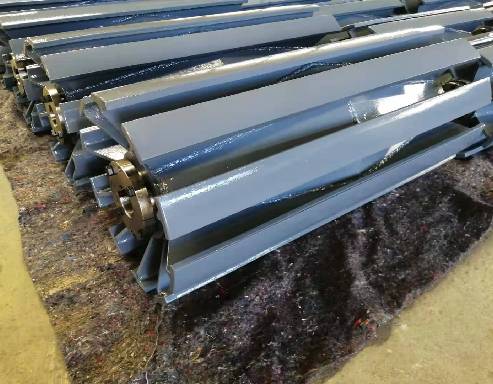 Afrikaans
Afrikaans  Albanian
Albanian  Amharic
Amharic  Arabic
Arabic  Armenian
Armenian  Azerbaijani
Azerbaijani  Basque
Basque  Belarusian
Belarusian  Bengali
Bengali  Bosnian
Bosnian  Bulgarian
Bulgarian  Catalan
Catalan  Cebuano
Cebuano  Corsican
Corsican  Croatian
Croatian  Czech
Czech  Danish
Danish  Dutch
Dutch  English
English  Esperanto
Esperanto  Estonian
Estonian  Finnish
Finnish  French
French  Frisian
Frisian  Galician
Galician  Georgian
Georgian  German
German  Greek
Greek  Gujarati
Gujarati  Haitian Creole
Haitian Creole  hausa
hausa  hawaiian
hawaiian  Hebrew
Hebrew  Hindi
Hindi  Miao
Miao  Hungarian
Hungarian  Icelandic
Icelandic  igbo
igbo  Indonesian
Indonesian  irish
irish  Italian
Italian  Japanese
Japanese  Javanese
Javanese  Kannada
Kannada  kazakh
kazakh  Khmer
Khmer  Rwandese
Rwandese  Korean
Korean  Kurdish
Kurdish  Kyrgyz
Kyrgyz  Lao
Lao  Latin
Latin  Latvian
Latvian  Lithuanian
Lithuanian  Luxembourgish
Luxembourgish  Macedonian
Macedonian  Malgashi
Malgashi  Malay
Malay  Malayalam
Malayalam  Maltese
Maltese  Maori
Maori  Marathi
Marathi  Mongolian
Mongolian  Myanmar
Myanmar  Nepali
Nepali  Norwegian
Norwegian  Norwegian
Norwegian  Occitan
Occitan  Pashto
Pashto  Persian
Persian  Polish
Polish  Portuguese
Portuguese  Punjabi
Punjabi  Romanian
Romanian  Russian
Russian  Samoan
Samoan  Scottish Gaelic
Scottish Gaelic  Serbian
Serbian  Sesotho
Sesotho  Shona
Shona  Sindhi
Sindhi  Sinhala
Sinhala  Slovak
Slovak  Slovenian
Slovenian  Somali
Somali  Spanish
Spanish  Sundanese
Sundanese  Swahili
Swahili  Swedish
Swedish  Tagalog
Tagalog  Tajik
Tajik  Tamil
Tamil  Tatar
Tatar  Telugu
Telugu  Thai
Thai  Turkish
Turkish  Turkmen
Turkmen  Ukrainian
Ukrainian  Urdu
Urdu  Uighur
Uighur  Uzbek
Uzbek  Vietnamese
Vietnamese  Welsh
Welsh  Bantu
Bantu  Yiddish
Yiddish  Yoruba
Yoruba  Zulu
Zulu Feb . 14, 2025 18:40
Back to list
TK Seal
Bearing housings play a crucial role in mechanical engineering and are vital components in various machinery. Their primary purpose is to support the bearing, ensuring its alignment and enhancing the performance and lifespan of the machinery by maintaining the position of the rotating shaft. Understanding the different types of bearing housings and their applications can significantly impact machine efficiency and reliability.
In situations where space is at a premium or high precision is vital, take-up bearing housings offer an excellent solution. These housings are used primarily in conveyor applications to maintain proper tension and alignment of belts. Equipped with a sliding mechanism, take-up units compensate for changes in belt tension and thermal expansion or contraction of the system. This adjustability ensures continuous operation and reduced maintenance intervention, making them essential in sectors like packaging and material handling. Barrel bearing housings are specialized for axial loads and misalignments, making them indispensable in applications such as wind turbines and other renewable energy sectors. These housings are designed to accommodate heavy loads and shaft deflection, which are common in fluctuating environmental conditions. Their adaptability to variable operational demands ensures optimal performance and longevity of the machinery. Choosing the right bearing housing type involves consideration of several factors, including the environmental conditions, load type and magnitude, required maintenance intervals, and space constraints. Proper selection and maintenance of bearing housings enhance machinery reliability, reduce operational costs, and prevent unexpected downtime. Employing expert consultation can further ensure that the housing type meets the specific technical and operational demands of the application. This not only assures optimal performance and safety but also aligns with industry standards and best practices. Ultimately, understanding the nuances of various bearing housing types allows engineers and maintenance professionals to make informed decisions that enhance operational efficiency and prolong equipment lifespan. Investing in high-quality bearing housings confers trust in equipment performance, which in turn upholds the reputation of businesses reliant on these critical components.


In situations where space is at a premium or high precision is vital, take-up bearing housings offer an excellent solution. These housings are used primarily in conveyor applications to maintain proper tension and alignment of belts. Equipped with a sliding mechanism, take-up units compensate for changes in belt tension and thermal expansion or contraction of the system. This adjustability ensures continuous operation and reduced maintenance intervention, making them essential in sectors like packaging and material handling. Barrel bearing housings are specialized for axial loads and misalignments, making them indispensable in applications such as wind turbines and other renewable energy sectors. These housings are designed to accommodate heavy loads and shaft deflection, which are common in fluctuating environmental conditions. Their adaptability to variable operational demands ensures optimal performance and longevity of the machinery. Choosing the right bearing housing type involves consideration of several factors, including the environmental conditions, load type and magnitude, required maintenance intervals, and space constraints. Proper selection and maintenance of bearing housings enhance machinery reliability, reduce operational costs, and prevent unexpected downtime. Employing expert consultation can further ensure that the housing type meets the specific technical and operational demands of the application. This not only assures optimal performance and safety but also aligns with industry standards and best practices. Ultimately, understanding the nuances of various bearing housing types allows engineers and maintenance professionals to make informed decisions that enhance operational efficiency and prolong equipment lifespan. Investing in high-quality bearing housings confers trust in equipment performance, which in turn upholds the reputation of businesses reliant on these critical components.
Next:
Latest news
-
Revolutionizing Conveyor Reliability with Advanced Rubber Lagging PulleysNewsJul.22,2025
-
Powering Precision and Durability with Expert Manufacturers of Conveyor ComponentsNewsJul.22,2025
-
Optimizing Conveyor Systems with Advanced Conveyor AccessoriesNewsJul.22,2025
-
Maximize Conveyor Efficiency with Quality Conveyor Idler PulleysNewsJul.22,2025
-
Future-Proof Your Conveyor System with High-Performance Polyurethane RollerNewsJul.22,2025
-
Driving Efficiency Forward with Quality Idlers and RollersNewsJul.22,2025
OUR PRODUCTS





























